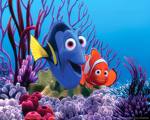Issues of the Great Barrier Reef
Climate Change
Climate Change has many impacts on the Great Barrier Reef; it affects the ocean and the marine life that live in the reef.
Some impacts on the ocean are as follow:
· Change of rainfall
· Increased of water temperature
· Increase of sea level
Climate Change can alter the ocean circulation and patterns, which can affect the food web in many ways. Animals like the marine fish and sea turtles are very temperature sensitive, it is predicted that the increase of temperature can lead to proportion to females.
Climate Change will start to increase faster if we don't do anything about it.

Coral Bleaching
Coral bleaching is the loss of colour from the coral. It increases the temperature, pollution and sedimentation. Mass coral bleaching happened in 2002 in the Great Barrier Reef and was the largest recorded.
Coral bleaching is caused by high temperature of water, when the temperature is at a high level for around six to eight weeks the coral starts to die and deteriorate until there is nothing left. Coral Bleaching was really severe in Keppel Islands, 80 percent of the coral was bleached and 40 percent died due to bleaching stress.
Some other causes are as followed:
· Disease
· Sedimentation
· Pollutants
It was reported that due to coral bleaching turtles and dugongs population were killed really fast.

Coral Disease
There are around 30 different types of coral disease that have been discovered. There are only seven types of coral diseases that have been recognized in the Great Barrier Reef, but it isn't a major threat to the reef.
Some Coral diseases are as included:
· Black band disease
· White syndrome
· Skeletal eroding band
· Brown band
· Black engrossing syndrome
· Pink spot
· Coral tumors
These diseases can only occur with reefs that have high coral cover.

